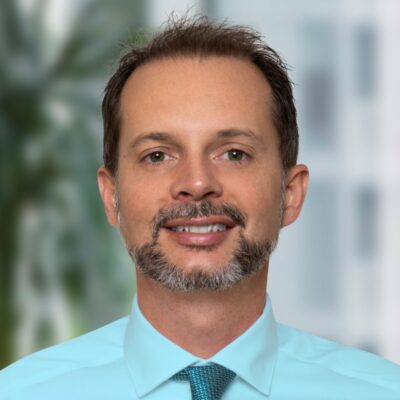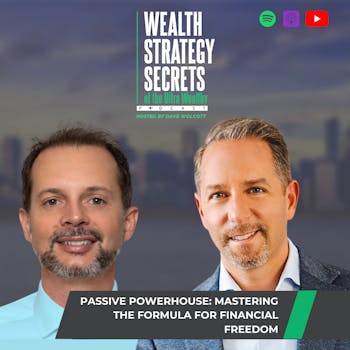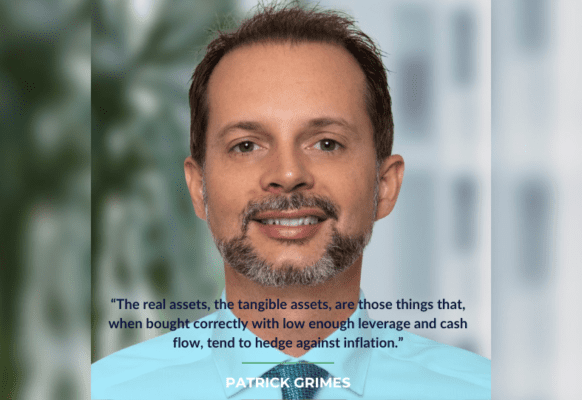Today, we had the pleasure of hosting Patrick Grimes, a true titan in the world of alternative investments and real estate. Patrick is the founder of Passive Investing Mastery, a company dedicated to empowering investors with the knowledge and tools they need to diversify their portfolios effectively.
He’s also the mastermind behind InvestOnMainStreet.com, a private equity firm boasting a portfolio of multifamily real estate valued at a staggering $600M+, spread across over 4,000 units in the southeastern United States and Texas.
Patrick also reflects on the transformative power of persistence, resilience, and adaptability in overcoming challenges and seizing opportunities in the ever-evolving investment landscape. He encourages listeners to embrace a growth mindset, embrace calculated risks, and embrace continuous learning.
Drawing from his own experiences and successes in the industry, Patrick shares practical tips for aspiring investors looking to enter the real estate market. He emphasizes the importance of education, networking, and aligning with reputable partners and sponsors to navigate the complexities of real estate investing effectively.
In This Episode
- Patrick’s background and his transition from being a passive investor to an active investor
- Valuable attributes that makes a successful investor
- His specific wealth management and strategies and current market cycle
- Alternative investing and challenges with the traditional investing model
Patrick, welcome to the show.
Glad to be here. It’s been a long time hanging out with you in different meetings, Zoom calls, and masterminds. It’s exciting to finally be among the elite.
Grateful to have you on the show, Patrick. I know there’s gonna be a lot of value here for the audience. Why don’t we kick it off there? I know you were in the tech industry as well and have an engineering background. We share that in common, at least being in the tech industry. How did you go from tech into real estate, and how did you make that transition? What’s your backstory?
I started as a machine design, automation, and Robotics engineer. Got a Mechanical engineering degree and loved it. Still do. I’m a geek, even though I’m not doing it anymore, I don’t think that leaves you. But early on, I was doing some really fun projects, like Lockheed, Raytheon, Boeing, Tesla, and some cool stuff. Early on, I was given some advice by the founder of the company I was working for.
He said that his only regret was not investing in more Real Estate sooner and recommended I invest as much as I can, as soon as I can in Real Estate. I was so shocked because I was in this world where it was either you’re 401(k), you’re in company stock, or you’re a day trader. There wasn’t anything else that my sphere of high-tech geeks was really into.
I went for it. I went into Real Estate and lost it all at first, the global financial crisis took me down in 2009 and 2010, but I came out humbled and ready to invest a little bit wiser.
What does that mean you lost it all? Like, were you investing in single-family rentals? What kind of asset types were you getting into, and what led to that?
The people who’ve got it right are the ones who understand that time is your greatest asset.
When I was a snot-nose engineer out of college, I was searching in Real Estate for the highest returning deals. I wasn’t super concerned with risk and I didn’t quite understand what being a personal guarantee on a loan was, a fully recourse loan. I got into a pre-development and it was a group that had destroyed it on terms.
They did great for the last three projects they had done. They doubled and tripled their money every couple of years. It was a great track record. I just didn’t zoom far out enough to see how development behaves in large market swings at the time. I got involved in that and I was very high leverage, just a lot of investors were back then with a first and a second Balloon Payment and all that on the land. We were fixing up the land and going to build on it.
Unfortunately, the music stopped and I didn’t have a seat. It was upside down very quickly. My loan was bought and sold several times. I couldn’t get ahold of it, paid out of pocket for a long time. Finally realizing there was no hope. Found an attorney, and he helped me negotiate Debt forgiveness.
I had a foreclosure. I had to pay taxes on the Debt forgiveness. It was pretty brutal. I was wrecked for a bit financially. Still a talented engineer, but it was an ego hit for sure.
Think about wealth more like the tortoise and not the hare from then on. Make more calculated decisions, investing in recession-resilient assets and markets. Focus on acquiring existing assets with solid cash flow.
What would you say was your biggest learning lesson out of all that?
I learned what the difference between investing and speculating was. In pre-development, you’re hoping that you’ll have something worth the loan in the future. There’s a bet that we can make this land something that we could build on it eventually. Then once we get across that bridge, we can rent it or sell it for Cash flow or a profit.
That’s a hope, and sometimes you won’t make it. Sometimes it’s external factors, like recessions. What happens when you don’t have that parachute, you got that loan and you’re underneath it yourself, they can come after you. That was a big lesson. I didn’t fully understand that. Recourse means Cross-collateralization. Everything I had done to that point was all on the hook for this one bad decision.
It’s led me to think about wealth more like the tortoise and not the hare from then on. Make more calculated decisions, investing in more recession-resilient assets and markets. Buying existing assets that had value in cash flow. That’s what led me into the single-family world, then ultimately large apartment buildings, and other assets.
You must have had a credible amount of resiliency yourself to stay the course, stay on to Real Estate and not get completely frustrated. Did you make any kind of decision at that point between active versus passive?
When I got out of it, I decided I was going to double down on my career. I wasn’t sure I was going to jump back into real estate right away. I didn’t know if I was coming back to Real Estate. I got a master’s in engineering and an MBA (Master of Business Administration). I started doing incredibly well, got promoted to a smaller company, and took a larger position.
What happened when I started getting large bonus checks again and doing some amazing projects was that I needed to find where to invest. I was still in the same quandary as I was, right out of college when I got that first good job. But I had that little voice in my ear, the wealthier investing in Real Estate. When I started learning how they’re doing it, they’re not oftentimes speculating. If they are, they’re doing it with a smaller part of their portfolio, or they’re doing it in a way where they don’t cross-collateralize everything.
Financial security is a false sense when you earn abundantly but spend lavishly.
Oftentimes, they’re buying existing assets where you can make a measurable improvement, but it’s worth the loan and it stands alone as its income-producing product right off the bat. The breadcrumbs of the wealthy led me right back to real estate. Now, as part of a diversified portfolio, if you look at the TIGER 21 allocations, it’s 26% in Real Estate. I had other assets and other kinds of investments.
As I approached how to do it again, I found that in Texas when in 2009 and 2010, it mostly leveled off the real estate market before it started going up again. Unlike in the coastal states like Orlando and Los Angeles or ones like hospitality-driven Las Vegas, those took 12 years to even just break even.
Places like where I started investing at that point was Houston and it went down a few quarters and leveled off for a year or two before it started picking back up. I started buying a bunch in Houston, a single-family home, immediately cash flowing. I can improve it measurably, refinance my money, and do it again. It was working. That’s what got me back into it.
Has that experience helped you shape your Investment Thesis today? Do you have a particular wealth strategy, or investor mandate that you’re working to?
I’m talking with one of the big wealth strategists here right now. We can probably talk about allocation wealth strategies for a while. At that point, it was all my own money. I was doing it like moonlighting it. Because I was also still doing engineering while traveling the world.
I spent two gap years traveling, Whitewater rafting out of the Grand Canyon, hiking to the base camp of Everest, done a bunch of cool stuff. It got to be where my investing career just became consuming all my time. At that point, I realized I had to stop. I met my wife and we took a break.
When I re-approach it, I added some new disciplines, which was more balance between my personal life. It was, “I don’t have to do it all myself”. I can learn how to partner and I can learn how to use other people’s money so I can scale and buy lower-risk assets, like apartment buildings. Apartment building became my next journey and that’s when I founded our first Private equity firm. Once that started growing, we started diversifying other things like energy.
We have a debt fund, and we’re doing some other alternative investments that are non-correlated and a little bit unique, but ones that help build up and fully round that portfolio.
It makes sense. Do you have any kind of predetermined or ideal portfolio allocation that you work towards with your investors?
It’s okay to be excited about investing, but transitioning that excitement into actionable steps represents a whole new level of mindset.
It depends on their goals. That’s typically what we do if they go to my website and set up a meeting with me. We’ll see where they’re at in life, what their current allocations are like, and where they’re looking to get. Some are looking to immediately retire with a ton of cash flow. Some are looking for more growth-oriented opportunities. Some have a bunch of Real Estate already that we’re looking to reposition. Some just need maybe some metal, some gold.
We just did a webinar where we had both precious metal individuals on there – which are gold, silver, and platinum. Then we had strategic metals, where you can make a 20% return just by buying technology metals. It depends, we usually kind of go real custom and integrate to where they’re at, where they’re trying to get, and then help them around out their portfolio.
Patrick, let’s unpack the dynamics around really Active investing versus Passive investing. Sometimes I feel that people just haven’t given this enough thought.
They may let’s say, one type of person could be a passive investor who’s excited about investing in Real Estate or some type of alternative asset. They’re very excited about it. Then they feel that they might want to, the next level for them would be kind of move into active investing.
Sometimes you have active investors who I don’t think are reaching real fulfilment as an active investor. It may not necessarily have been their calling. They may have been chasing it for the wrong reasons. Because maybe it’s lucrative to get into Real Estate. They heard the quote that “more millionaires are produced in real estate”, so they’re going to go after that. I think that truly as an entrepreneur, you’re looking for that freedom of purpose.
Where you can be fascinated and motivated about the work that you’re doing. It’s okay to be excited about investing but to take it into that active space, I think it’s just a different level of thinking. What are your thoughts based on your journey around that?
Since I’ve kind of done a little bit of both, I’ve got some articles that I’ve written on the topic in Forbes. I’ve got some assets – single-family versus multi-family, active versus passive. A lot of people out there kind of get this allure of, “I can just do it all myself”.
A lot of my more prevalent investors are doctors, they’re attorneys. Some have a high-paying job. They’re used to learning something and becoming the expert in that thing. They get this idea that “I can also become an expert like I thought I could be.” When I was a machine design automation robotics guy, I thought I could also become an expert in Real Estate. To be active, you need to do that. But they say it takes 8,000 hours to master something.
What unfortunately happens is you make unfortunate trades against your family, friends, and hobbies. The purpose that you referred to earlier. That takes away from your family life and what it trades it for is, unfortunately, a lesser returning portfolio oftentimes, and sometimes at a higher risk. When I was doing single-family actively myself, I was still having to sign on the loans.
I was buying a little bit better assets, but they were not Recourse Loans like the apartment buildings. I couldn’t buy an apartment building myself. I was still cross-collateralizing, maybe to be a little bit safer, but I was still taking greater risks with each investment. It wasn’t until I learned to partner and work with others and pull capital that we got into lower-risk assets.
Learn to partner and leverage other people’s money to scale and acquire lower-risk assets.
People that are willing and they’ve been to the process I did. It took me to burn the candle at both ends doing all the jobs myself to the point where I couldn’t even get married to finally realize, “I have to take a break from this”. It would be two and a half years to learn how to partner with others, to learn how to use other people’s capital, and to be able to scale because actively, you can’t just buy one property as an active investor and get a great deal on it because after you’ve improved it or whatever your business plan is, that return, that IRR (Internal Rate of Return) goes down every year.
It goes down and eventually becomes a natural appreciation. To keep your velocity at capital high, you’re not just making one trade at one time with your time. You have to constantly take whatever that property was, improve it, buy another one, and improve it. People just don’t like it, that’s another job, that’s another career.
You’re distracted, doing whatever it is that you made money in the first place. You’re distracted, there’s somebody else that’s going to do it better than you because that is their full-time gig, and that’s something that they’ve mastered. Oftentimes, you can do a better return just by investing in that guy. The unlimited partners, less risk, and overall, you can diversify more.
Because you’re not only in one place, maybe not down the road from you, but maybe you’re diversified in several states and several different asset classes. People passively invest all the time in the stock market, and somehow that’s acceptable. Passively investing in syndications allows for higher returns, depreciable, tax advantage growth, and still diversification across geographies, assets, and sponsors.
It’s a journey, but you have to learn how to partner which is education on its own.
The people who’ve got it right are the ones who understand that time is your greatest asset. That can help you make that determination of active versus passive, because like you say, you get into active because it might be exciting. But before you know it, you have a full-time job.
That might be okay if that is your purpose and mission and that’s aligned with that. But if it’s not, you have created that job. Then the other thing is, to your point, it becomes less scalable and you need to be thinking about it not just on the most immediate deal that you can do, but in the next five to ten years and what that trajectory looks like, you put yourself there and say, “Does that align with my vision or not?”
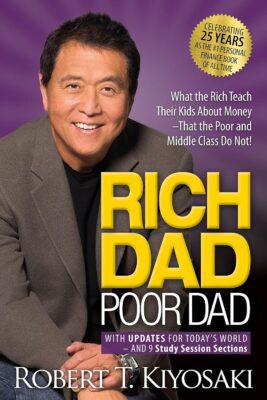
The financial security, and financial freedom people talk about all the time. Ultimately, I think that there’s a kind of the first tier which is scarcity. You go from working hard at a job and people tend to spend everything they make regardless of how much they make. They’re always in the sense of scarcity. The first thing you have to do is read Robert Kiyosaki’s “Purple Book” (Rich Dad Poor Dad: What the Rich Teach Their Kids About Money That the Poor and Middle Class Do Not!) and reduce your expenses so that you have a surplus.
Then the goal from there is to get out of that job so that you have that time and freedom. The financial security part is where it’s a false sense of security when you’re making a lot and spending a lot. Because you’re always on the verge. It’s when you can create a surplus that you can put towards passive income, and have that passive income then cover your bills. Now, when you reach that, you’re just covering your bills. That’s just the beginning.
Because the purpose part is that ability, our mission is to not get people to financial security but to get them to a point at which they have a surplus that allows them to then contribute towards having the life that they want. Towards the causes, they care about most in life.
For my wife and I, that’s been amazing because we’ve gotten to the point now where not only are we in a surplus position, but we’ve also been able to put money away to create cashflow opportunities. Where we get this sense of – now I can see beyond just my immediate needs. I can see beyond just covering our expenses. I can see what is that life we want to create by design.
For example, during Covid, my wife came out one day and said, “I love our place. It’s a cute little spot in Los Angeles, but we’re under curfew, we’re under quarantine. Riots are going on, there are fires and smoke. Let’s move to Hawaii.”
Two and a half weeks later, I had us on a plane to Hawaii. That would have never happened had we not gone through those steps to get past the scarcity and the surplus into passive income, into a place where we could live in a possibility and have a life by design.
Patrick, what do you see as some of the most successful strategies and tactics that investors deploy to accelerate their wealth?
I have various articles I’ve written on IRA (Individual Retirement Account) and 401(k) in Forbes Investing. I’ve written some on 1031 Exchange. That was very powerful for me because I have Real Estate, ones that I was actively managing and they were small. They were not as profitable and I wanted to trade those up for more profitable, safer assets.
1031 Exchanges, what they say is one of the most powerful tax-advantaged tools available to Americans still. What I like to do with investors, again, it’s so custom because I always put people in different perspectives. Our mission at Passive Investing Mastery is to take a look at when I was starting engineering, as I mentioned before, I had no idea what the Real Estate world was or how to even approach it. I didn’t know that there were alternative investments.
To maintain high capital velocity, it’s not about making one trade; it’s about constantly improving properties, acquiring new ones, and repeating the process.
I didn’t know I could reach oil and gas investments. I didn’t know that there were Debt Funds that would allow me to become a lender and get very low-risk cash flow to live off of. We also have other things like a Litigation Fund that we’re launching, which allows for a completely non-correlated investment that doesn’t have any effect on gold, or interest rates, and doesn’t have any attachment to the Real Estate.
It’s a completely non-correlated investment, which allows you to balance out cash flow and growth. What I’ll typically do is, we’ll look at investors’ portfolios, as I know you do too, Dave. We’ll see what are those alternative investments where we can get their portfolio goals between cash flow and growth.
Or metals, as I said before. We can get a balance to get them where they want to get to as fast as possible in a way where they’re not all down in one thing in a year. They’re non-correlated investments.
It’s big. I appreciate that we have a similar mission and trying to help people just learn some of these alternative strategies that are not taught and people just get sucked up into this Wall Street machine. If you look at the SPIVA (S&P Indices Versus Active) report and look at the past 15 years, they’ll indicate that actual financial planners and active managers have underperformed the S&P 500 by 88%.
Yet, the majority of Americans, that’s still where they hold their capital. I think financial literacy is probably one of the top three reasons why people just don’t understand where else they can invest. But helping to provide those insights to understand the risks, and what you’re investing in. Then aligning that to your investor DNA is so much more powerful to be able to make an impact in achieving your goals.
Exactly. I think out of the great depression, they started the 401(k)s. They started all these things to try and get money back into the Stock Market. It was never meant to be the end-all for retirement because they had pensions, too that then evaporated as well.
Some people, they’re still kind of living in the way that their grandfather lived. They’re living in a place where they get this false sense of security that they can put money in the stock market and it will be there.
Unfortunately, it’s hard to keep up with inflation. The IRA and 401(k) accounts that aren’t self-directed and alternative investments like ours, are not performing in a way that will get you to the retirement that you’re looking for. But that’s what you’re supposed to do. That’s what’s so odd.
I think it’s that education and why we have a Passive Investing Mastery series, which you’re going to be on Dave, I’m looking forward to that. It’s going to be a great one where we’re just introducing investors to all the different kinds. It’s a blue ocean, all the different kinds of Alt(ernative) Assets that they can participate in, that are non-correlated to the stock market, that provides tax advantage, cashflow depreciation, and wealth because it is so difficult to just introduce it.
Our mission is not just achieving financial security, but empowering individuals to attain a surplus enabling them to shape the life they desire.
It’s becoming more popular. I’m glad to say that’s because the millennials are starting to get disillusioned by the stock market. They’re starting to see, and want to take a little more control than these financial planners. Even gold has tracked over the last 12 years with the S&P 500. You would have done better if you’d just bought a bar of gold. In some cases, and if you were to join some of these. Oftentimes, with investors, I don’t know if you get the same thing, Dave. I’ll sit there and talk about, “I’ve been investing in Real Estate for 15 plus years, I’ve been up and down on different swings of the market. Here’s our strategy for putting together recession-resilient portfolios and investments.” They’ll say, “Okay, let me go talk to my guy.” I’ll say, “Who’s your guy?” He’ll say, “It’s a financial planner”. A financial planner who only took a six-week course to become certified. All he’s going to do is put you into the Index Funds that he’s required to put you in because he’s an employee
He’s not allowed to do what they call, Sell Away. You can’t blame him because he’s got to put money on his family’s table. If he points elsewhere, points at other investments, he’s taking food off of his family’s table, right? It’s a tough world when people are geared to trust these financial planners and trust these investment products, which ultimately underserve them and don’t meet their goals. We just have to get them further into the “know” and educate them on the Financial IQ of these available alt assets.
To the listeners out there, April is Financial Literacy Month. Many people may not have realized this. Maybe now is the time to commit to understanding some strategies, some asset classes, and things that you’re going to learn about just like we’re also creating habits around learning – whether it’s self-development or professional development.
Dedicate some time to increasing your knowledge with something like Patrick’s Investing Mastery Series or some other good resources out there. Patrick, what do you think about the current economic cycle? There’s just such a myriad of different dynamics happening all the time. I think partly that’s sped up by the speed of information these days where instantly can hear things. We just kind of live in this world where everything is just very reactionary.
Also trying to weed through the data and find out what’s important. We’ve got an election year, you can hear one side all day long, and then you can hear the other side all day long. Are you seeing any current trends right now being either negative trends, things to stay aware of, or things that investors should be looking for as opportunities over the next five years?
Passively investing in syndications offers higher returns, tax advantages, and diversified exposure across geographies, assets, and sponsors.
It’s a really good point. There’s been a rise in interest rates post-Covid here to fight inflation, which has impacted several markets. One of those has been Real Estate. Back when in 2009 and 2010, I was struggling. I got my head way over my skis and I was getting ranked over the coals.
When that was the best buying experience of my life, I missed out on it. Right now when we see the Real Estate Markets as an opportunity, I call it the “Recessionary: Upside of the Downturns”. Taking advantage of that because although the market itself seems to be booming, there’s an aspect of it being propped up by our government’s overspending. Every 90 days, we’re a trillion dollars more in debt. It’s insane. It’s just hard to fathom.
The real assets, the tangible assets are those things that when bought correctly with low enough leverage and cash flow, those are the things that tend to hedge with inflation. I have an article in Forbes about that. When you have an inflationary environment, a high-interest rate environment like we’re in, the opportunities where it harms valuations in real estate or an appreciable effect on debt, where interest rates are high and debt investments are more profitable.
Right now we’re seeing credible opportunities for investors where we’re acquiring assets. All cash commercial stuff at the basis is, we could never have done that in the last ten years. We used to have to hold something for five years to get a return like a 20% or 30% IRR. But we just bought an asset for four million and immediately appraised for five.
Financial illiteracy ranks among the top three reasons why people overlook alternative investment opportunities.
We can buy things right now in Commercial Real Estate where you come in at such a low basis. You make the return on the buy. That’s neat because as an analyst, the idea of buying something and slowly improving it by infusing capital into it, hoping rents grow and hoping the appreciation grows, that calculus isn’t working right now. Inflation is affecting that, insurance costs are going up, and taxes have gone up. It’s hard to correlate CapEx (Capital Expidenture) infusion to appreciation. That playbook isn’t quite penciling.
But because you can buy right now, and you can make the return on the buy. It’s an incredible buying time. The people that made billions in 2009 and 2010, that’s what they did. Another impact of 2009 and 2010 was that banks pulled back. We have that right now. We’ve all heard in the news about banking collapses and banks being under stress. There’s a trillion and a half dollars in Commercial Real Estate that coming due in just 2025 alone.
The banks are having a liquidity crunch. The interest rates that went up affected their bond values. When they sell their bonds, they have to sell them at a discount. They don’t have money right now for two reasons. One is, because the Liquid assets where they kept the bonds, they’re devalued and the loans that they lent on aren’t paying off. After all, they were mostly commercials, regional banks, and Commercial Real Estate loans.
What that effect is, there’s a huge demand for Commercial Real Estate debt. We used to get loans for like six, seven, 8%. Some of those loans now are 10, 11, 12, and 13% just because the demand was there. As you saw in 2009 and 2010, private debt investors, private credit, people that came, and Private equity firms like what Dave and I have could come and we could lend. We can fill that void and we can lend, but because we can move quicker and trust us to close on like regional banks, we can lend at really high rates.
What we’re seeing right now in the debt fund, is income producibility that we’ve never been able to have before in a low-risk asset class. We’re 7% to 15% monthly annualized payments while being in a first position, Senior secured debt. That’s not common equity where we see all this movement of valuations up top. This is down in that debt piece.
When you lack that parachute and find yourself under a loan, you’re vulnerable—they can come after you.
Investors have the opportunity right now to invest in debt and get high cash flow. Immediate cash flow returns are almost like what equity used to be like years ago but at a much lower risk premium. I think those are potentially the two biggest opportunities right now. A lot of people are not seeing them. It’s not big in the news, but I’m sure Dave – you and I see it every day. We’re pouncing on those opportunities.
Good insights on that, Patrick. Just switching gears for a moment, what is your biggest personal productivity hack, habit, routine, peak performance gainer that you could share?
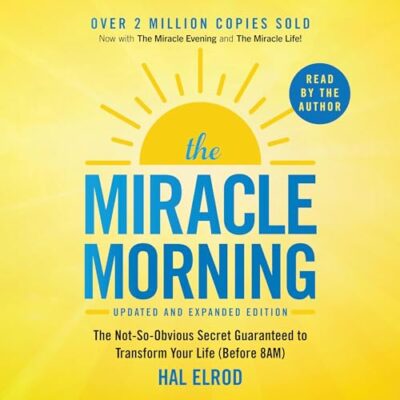
Sure. I’ve had this habit every single morning since college to go on a run. I run virtually every day. I’ll maybe take seven total days out of the year in not running. Usually, because I get ill, something happens or I did a red-eye flight somewhere. I run around the lake right behind me or I run on the beach when we’re in Hawaii part-time there.
I listen to webinars and podcasts just like this one. Audiobooks, self-help leadership books, TED Talks, and some inspirational things that help propel my day, help get my gears turning, and get me sharp. Commonly, I’ll do it. I don’t know if you’ve heard of The Miracle Morning, but Hal Elrod wrote it. I grew up next to Hal Elrod’s property and he went to the same high school I went to. Interesting story. He used to trespass and swing on his rope, swinging a lot as a kid.
I had a good laugh about that last night. But yes, I’ll run, listen, do the meditation – the SCRIBE-ing. My employees will probably attest to, sometimes I’m sniping them with, “Check this out. What do you think about this idea?” Wee hours in the morning before they even come in. They come in and there’s all these weird ideas. But that has been such a cool mind, professional growth time for me where I can just run, be focused, listen, and consume some amazing content that helps to alter and keep me sharp in my game.
Awesome. I can relate, working out is like brushing my teeth for me. I just have to do it. It has to be there. One interesting thing, I think what people just don’t make the connection is that one of the ways to amplify your learning is to have heightened when your endorphins, your serotonin, your hormones are kicking a lot higher, you’ll intake the information in a better way, and then you can put it to action. When you are listening to podcasts or whatever, while you’re working out, it amplifies the effect of it. It’s a good little hack right there.
If you could give investors and the audience just one piece of advice about how they could truly move the needle on their wealth journey, what would it be?
I usually say, “We’ve already touched on it.” Do one active, and one passive step a day. That’s one podcast, one leadership book, and one active step a month, which is attending some kind of tribe – meeting up, going to an event, something that gets you surrounded by people like what you want to become. For me, that’s investing alternative investments. Find real estate people, find oil and gas, find metals, find something.
Take one active and one passive step each day: listen to a podcast, read a leadership book, and attend a tribe event monthly to surround yourself with those you aspire to become.
Find open-minded people because it’s hard for anyone to get out of a pattern, especially if it’s like me, I didn’t come with it, my family didn’t bring this to me, I went to it and I had to find people that tried. People don’t want to wander off into the desert by themselves, they wanna band together with others and we’re built that way. Find those people that will stretch you, that will grow you.
I’ve joined Masterminds now, just to be able to continuously get myself in front of people who are just killing it way better than I am and are the life division that I want to be in the next five, or ten years. If you do that in your professional career and you’re always looking forward to your professional career, you can also do that in your investing career. Those small steps will make bigger leaps for you and your overall happiness and ability to retire early.
People don’t want to wander off into the desert by themselves; they want to band together with others. We’re built that way. Find those people who will stretch and grow you.
Great stuff, Patrick. I appreciate all the wisdom and your time today with the audience. If people want to connect with you or learn more about what you guys are doing, what’s the best place for them?
If you go to passiveinvestingmastery.com, that’s our website. You can see all the investments we have up there, the Mastery series, where we bring on different sponsors, including Dave and dozens of others, and have all different types. We have all the history there, too, of all the ones that we’ve had before, but all kinds of extraordinary types of investments.
From laundromats, ATM funds, parking, mobile homes, metals, strategic metals – all kinds of stuff. You can learn about all these sponsors and their ability to invest in different ways. Check it out. I recommend everybody do that. There’s a link where you can set a meeting up on my calendar and we can have a chat wherever you’re at. I don’t have a one-size-fits-all type of approach. Wherever you’re at, what your goals are, and where you’re going, we do our best to get you pointed in the right direction, whether we’re a fit or not.
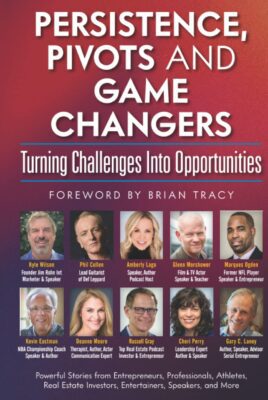
I love talking to investors. It’s one of the things that I love about what I get to do now that I’m full-time in this gig and have been for some time now. If you want to hear my whole story, you’re welcome to have a free copy of my book. It’s called Persistence, Pivots, and Game Changers: Turning Challenges Into Opportunities.
I’m here on the book cover, I still had my hair back then. I co-authored this. There’s Phil Collen the guitarist, the Def Leppard did a chapter, an actual rock star. A couple of other people on here the NFL, NBA players, and athletes. It was such a fun project. I had a great time doing it. I bought a ton of these. I sign them and send them out.
If you go to passiveinvestingmastery.com/book, that is a secret link. Put in the name of Dave’s podcast or put in Dave’s name so I know you are. We don’t sit them out for free to everybody but fill in that promo code with the name of Dave’s podcast, I’ll sign it, and get it out to you. I tell my whole story of how I lost it all, my ebbs and turns through high tech and between companies, the single-family, got married in Beijing, and then larger scale multi.
I tell all the stories of how we ended up and why it’s cool. If it inspires anybody to have a journey on the path that I’ve had, then I’ve done my part.
Awesome, I appreciate that Patrick. We’ll make sure we link to that in the show notes as well. Thanks again for your time today.
I appreciate it. Thank you so much. I’m looking forward to having you on our series.
Important Links
Connect with Patrick Grimes
Connect with Pantheon Investments
Books
Patrick Grime’s Forbes Articles
People
Further Resources
Your 10-Step Actionable Checklist From This Episode
✅ Understand the implications of recourse loans and cross-collateralization. Recognize the importance of mitigating risks in investment decisions.
✅ Assess the benefits and drawbacks of active and passive investing in real estate. Understand the time commitment and risk associated with each approach.
✅ Focus on achieving financial security by reducing expenses and creating a surplus that can be allocated towards passive income streams. Understand that financial security is just the beginning of the journey towards financial freedom.
✅ Align your investment decisions with your long-term vision and goals. Consider how each investment opportunity fits into your overall wealth-building strategy and lifestyle aspirations.
✅ Mitigate risks by diversifying your investment portfolio across different asset classes, geographies, and investment strategies. Avoid over-reliance on any single investment or asset class.
✅ Explore opportunities in debt financing, especially in the current economic climate where there is high demand for commercial real estate debt. Evaluate the potential for high cash flow and relatively lower risk compared to equity investments.
✅ Surround yourself with like-minded individuals who can support and challenge you in your wealth-building journey. Consider joining mastermind groups or networking events to connect with experienced investors and industry professionals.
✅ Educate yourself about alternative investment options beyond traditional stocks and bonds. Consider exploring opportunities in real estate, debt funds, precious metals, and other non-correlated assets.
✅ Dedicate time to increase your financial literacy and understanding of different investment vehicles and strategies. Take advantage of resources such as Patrick Grime’s Passive Investing Mastery series to expand your knowledge.
✅ Visit Patrick Grime’s website, Invest on Main Street for further insights and guidance on real estate investment strategies. Schedule a meeting to discuss personalized investment plans and portfolio optimization.
About Patrick Grimes
